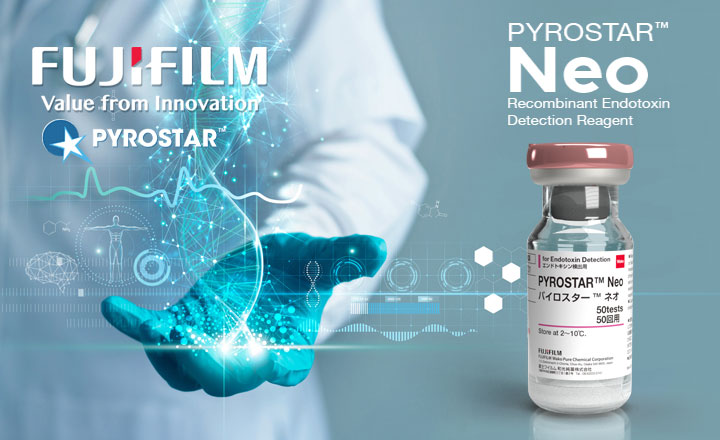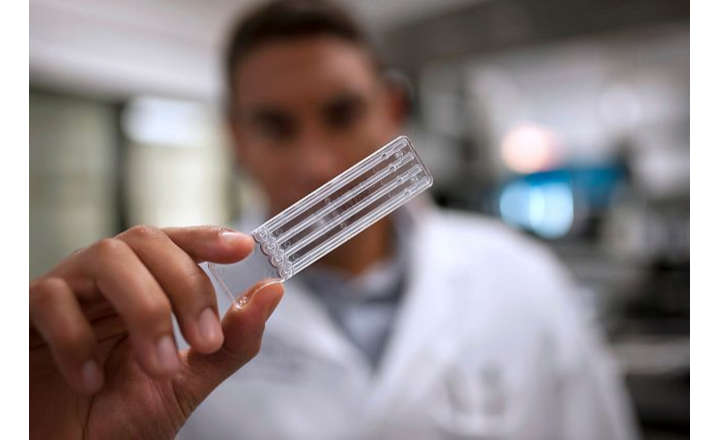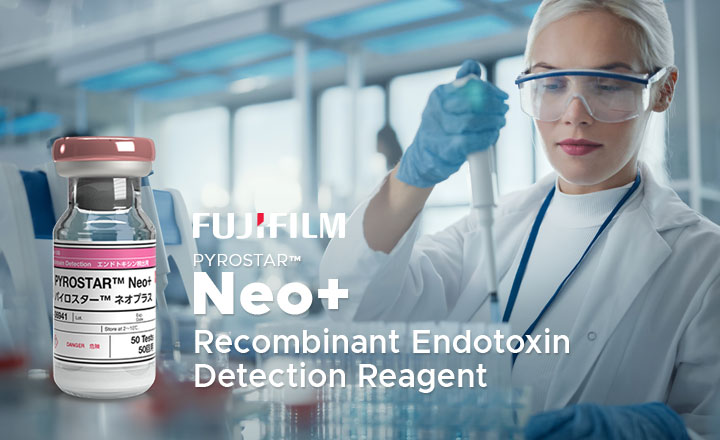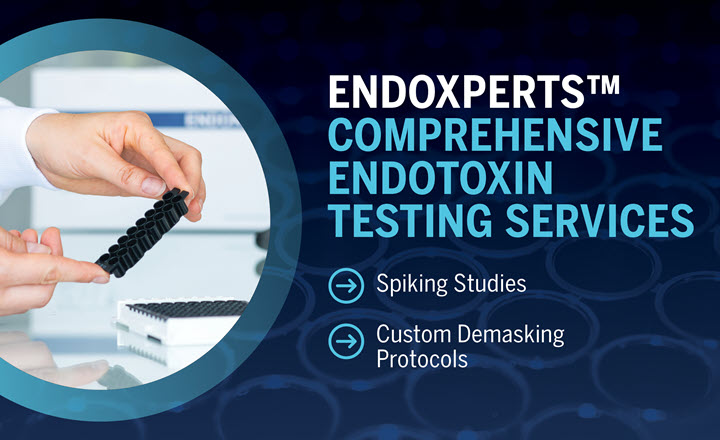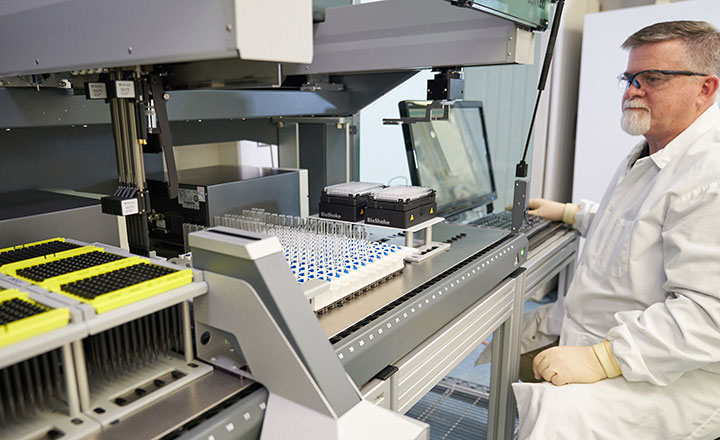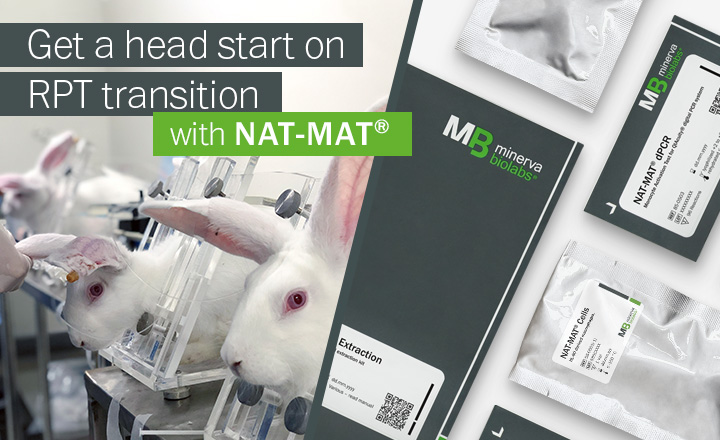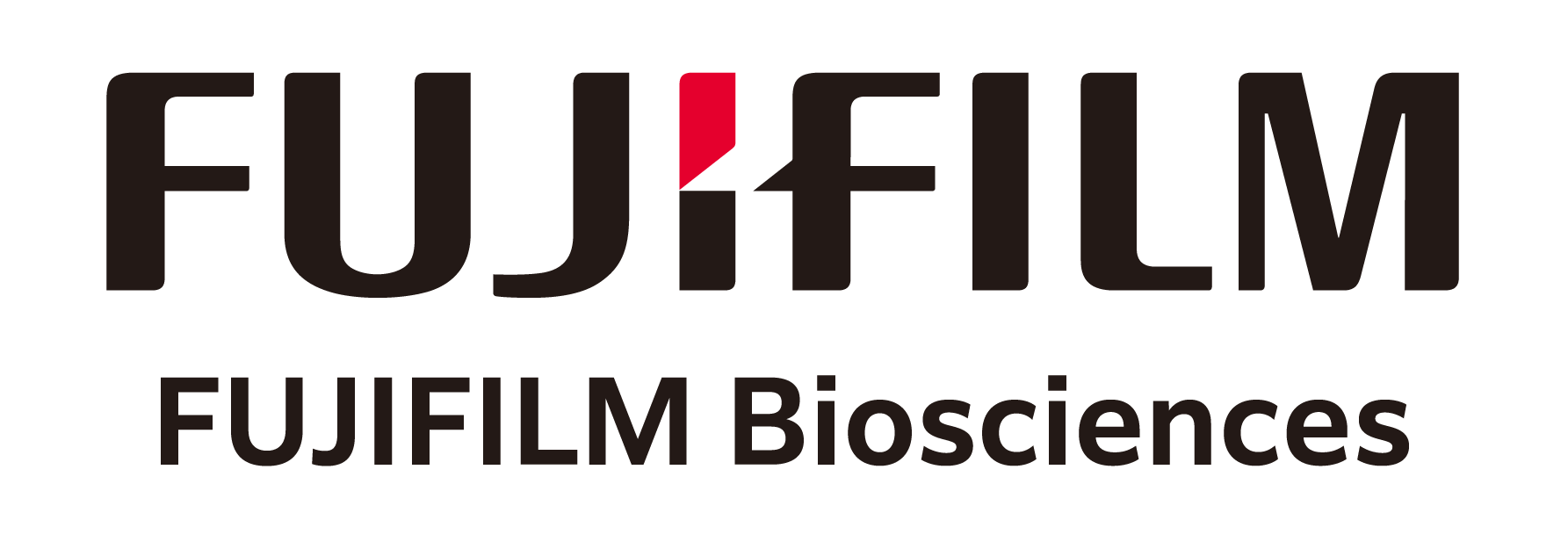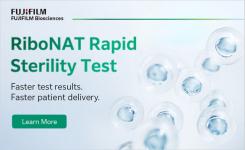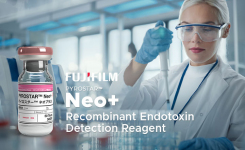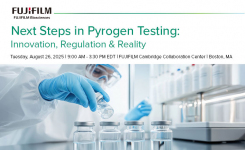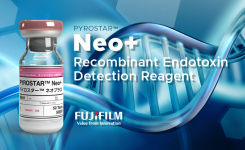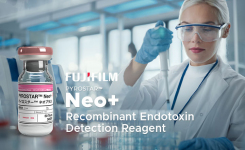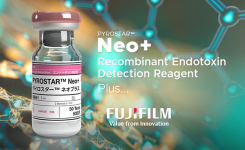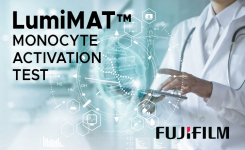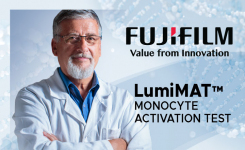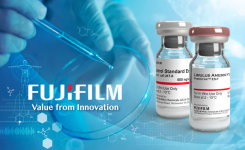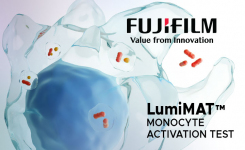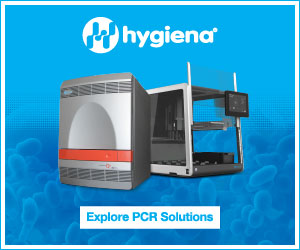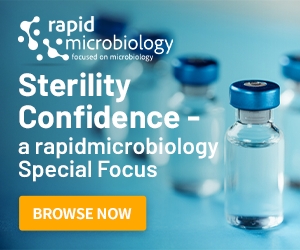Replacing horseshoe crab-sourced LAL reagents as currently listed in the Harmonized Pharmacopeia for the Bacterial Endotoxin Test (BET), is an issue that keeps recurring. Various forces including corporate sustainability commitments, reagent standardisation issues and difficult matrices are among the factors bringing about a market demand. Recently, recombinant LAL (rLAL) reagents have been introduced as commercially available products and offer a possible replacement for natural or animal-sourced LAL reagents.
The PYROSTAR™ Neo from FUJIFILM Wako is one such option, it combines the three enzymes involved in the LAL cascade - recombinant factors (factor C, factor B and proclotting enzyme) with sequences derived from Limulus polyphemus and a chromogenic substrate (peptidyl pNA).
Here rapidmicrobiology discovers from endotoxin experts Timothy Francis. Senior Technical Specialist LAL Division and Hesham Rashed, Technical Specialist LAL Division, at FUJIFILM Wako Chemicals U.S.A, more about the new PYROSTAR™ Neo product and why laboratories should be considering changing from LAL to rLAL reagents for some or all of their endotoxin testing.
Q: The new PYROSTAR™ Neo is based on recombinant technologies – what advantages does this approach offer to labs?
A: First, recombinant technologies can lead to a reduction in unknown factors that could lead to interference. It is known that the protein "Factor G" causes interference in natural LAL in response to beta-glucans. All recombinant technologies are naturally resistant to beta-glucans due to the omission of this protein. However, the 3-protein cascade of natural LAL enhances the reagent's response to endotoxin and overcomes the effects of interference. PYROSTAR™ Neo is one of two current 3-factor recombinant reagents, providing a unique, endotoxin-specific synthetic reagent that most closely matches the action of natural LAL.
Second, recombinant technologies allow for reduced dependence on horseshoe crabs. Recombinant LAL provides a synthetic alternative that reduces the need for horseshoe crab blood. The adaptation of recombinant LAL ensures that a consumer's endotoxin testing needs are met by a reliable source while reducing the environmental impact.
Third, recombinant technologies allow for less lot-to-lot variation: Recombinant LAL can be produced with a high degree of purity and consistency, creating a reliable and precise reaction to endotoxin.
Q: What's the current regulatory status of endotoxin testing using recombinant factors, are they being used for final product release?
A: In the United States, the USP and the FDA have mentioned Recombinant LAL (rLAL) as an alternative to the Bacterial Endotoxin Test for detecting bacterial endotoxins in pharmaceuticals and medical devices. This status as an alternative method means that the rLAL is a suitable method for all needs of the BET if an analytical method's validation is done by the pharmaceutical manufacturer to show it is a suitable equivalent to natural LAL. However, extensive validation studies have shown that rLAL provides comparable results to traditional LAL methods and PYROSTAR™ Neo users are supported by the manufacturer's validation data. Although PYROSTAR™ Neo does not need the FDA licensing of natural LAL since it is not a biologics product, it is manufactured in an ISO-13485 certified facility and quality system that comply with the FDA's IVD QSR regulations.
Q: How does the PYROSTAR™ Neo compare to other recombinant factor-based options on the market?
A: PYROSTAR™ Neo has the highest validated standard curve range (50 EU/mL-0.001 EU/mL) of all rLAL reagents. Only PYROSTAR™ Neo and one other reagent can be measured in the visible range (405 nm) with an absorbance reader. The others need a fluorescent reader. Finally, PYROSTAR™ Neo is the only reagent that can be reconstituted with LRW like natural LAL. All other recombinant reagents require a reconstitution buffer.
Q: What sort of laboratory is typically going to benefit most from using this product?
A: Laboratories that value consistency in supply, sustainability in manufacturing, ethical values to use animal-free reagent, and a reduction in the utilization of the horseshoe crab population will value the benefits of using PYROSTAR™ Neo for endotoxin testing. In using PYROSTAR™ Neo, Clients can make a meaningful step in reducing the pharmaceutical world's reliance on the horseshoe crab while not sacrificing the quality of reagent.
Q: Does this novel approach help address issues with difficult matrices?
A: PYROSTAR™ Neo recombinant LAL is a novel approach to endotoxin testing that offers high sensitivity and specificity, making it particularly useful for difficult matrices. The high sensitivity of PYROSTAR™ Neo allows for the accurate detection of endotoxins even in complex samples, such as those containing high levels of protein or lipids, which can cause interference. In addition, PYROSTAR™ Neo utilizes the chromogenic substrate of natural chromogenic reagent to capitalize on the advantages provided by the strengths of natural LAL development.
Q: How easy is it to automate set up and reading?
A: PYROSTAR™ Neo is the only recombinant reagent that utilizes virtually the same procedure as the manufacturer's natural chromogenic LAL. A new user transitioning from natural LAL will be extremely familiar with the procedure from the beginning.
Q: How does it handle data integrity issues?
PYROSTAR™ Neo is validated to run on a 96-well microplate reader. FUJIFILM Wako produces the Toximaster® QC8 MPR software. Toximaster® QC8 MPR is designed to manage and analyse endotoxin test data. It includes features that can help ensure data integrity, such as audit trails, electronic signatures, and user access controls. These features help to prevent data manipulation and ensure that data is accurate and reliable.
Toximaster® QC8 MPR also includes data management tools, such as data backup and recovery, which can help prevent data loss due to hardware or software failures.
Learn more about PYROSTAR™ Neo or if you want support on how to implement rLAL in your laboratory use the green Request Information below to connect directly.
About the authors
Timothy Francis, Senior Technical Specialist LAL Division
Timothy Francis is the Senior Technical Specialist for the LAL Division of FUJIFILM Wako Chemicals U.S.A. Corporation. He comes into the Technical Specialist role with five years of experience teaching the natural sciences at a college level. He draws upon this experience to provide professional technical support and training for the PYROSTAR™ line and to help customers with their technical needs.
Hesham Rashed, Technical Specialist LAL Division

Hesham is a Technical Specialist for the LAL Division of FUJIFILM Wako Chemicals U.S.A. Holding a biology degree from Virginia Commonwealth University. He is a creative, curious, and open-minded individual who excels at helping customers find solutions to their unique needs.


